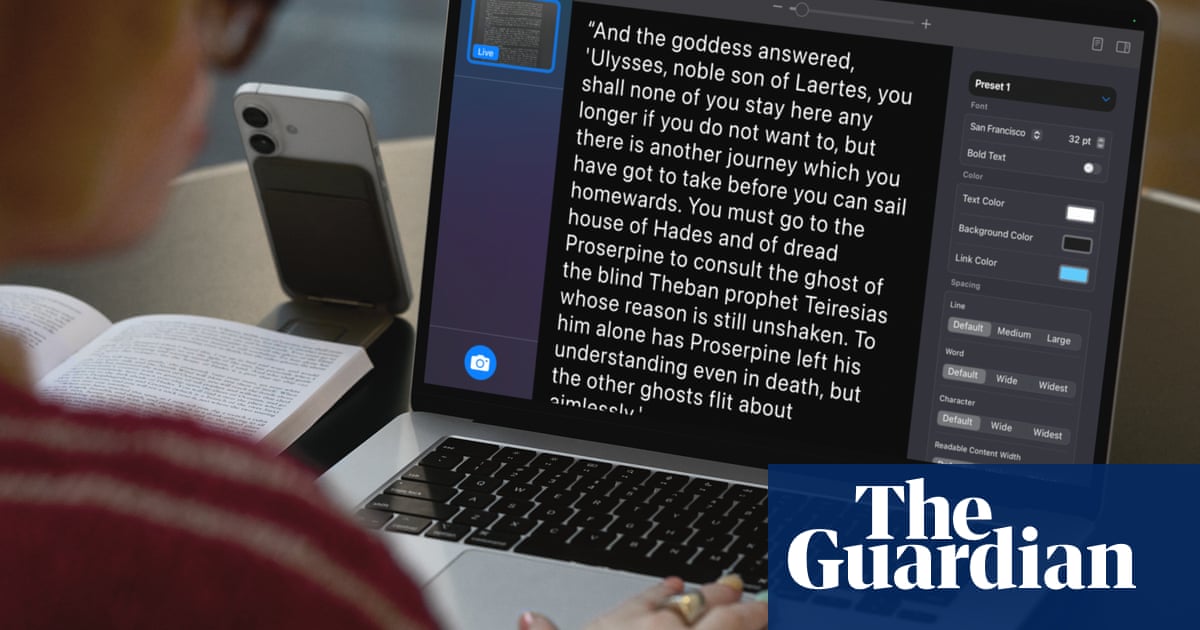Apple has announced a broad range of new accessibility features for iOS focused on people with vision or hearing impairments, with the company downplaying the notion that the price ofApplehardware means accessibility comes at a cost.
On Wednesday, before Global Accessibility Awareness Day on Thursday 15 May, Apple announced new accessibility features to launch on iOS later this year, including live captions, personal voice replication, improved tools for reading, braille reader improvements and “nutrition labels” in the app store.
In these labels, developers will be required to list what accessibility features their app has, which may include voiceover, voice control or large text.
Apple’s senior director of global accessibility policy and initiatives, Sarah Herrlinger, told Guardian Australia that the nutrition labels would hopefully encourage developers to enable more accessibility options in the future.
“[It] gives them a real opportunity to understand what it means to be accessible and why they should do it and then build on that,” she said.
“By doing it this way, we’re also giving them the opportunity to grow into it; maybe there are a couple of the features that they already are doing really well, and they get an opportunity to highlight those as they learn about the other ones and start to build those.”
The company also improved its magnifier app, bringing it to Mac and allowing users to use the camera or an attachediPhoneto zoom in on screens or whiteboards in lectures to be able to read presentations – with adjustable brightness, contrast, colours and settings that make it easier to see texts and images.
New braille features include note-taking with a braille screen input or a compatible braille device, and allow for calculation using Nemeth braille, a standard braille code used for maths and science.
The new personal voice feature that can recreate a user’s voice using just 10 phrases is an improvement over the existing model, which requires 150 phrases and for users to wait overnight for the model to be ready to use. Apple said this voice replication would be password-coded and remain on the device unless backed up to iCloud, where it would be encrypted, reducing the risk of someone’s voice being used without their permission.
Herrlinger said that as artificial intelligence advancements were made at Apple, the accessibility team was looking at how to integrate them into their work.
“We’ve actually been deeply working with our AI team for many years on features. And so as new opportunities arise, we always make sure that we’re staying as cutting-edge as we can to build the best tech we can,” she said.
Google’s Android system has some similar accessibility features, including live captions, a braille reader and magnifier, andannounced new AI-supported featuresthis week.
Live Listen, Apple’s live captions feature, also allows users to get improved audio through their AirPods in places such as lecture theatres. In addition to live captions in this update, Apple also recently launched a feature allowing people with hearing lossto use AirPods as hearing aids.
Apple’s hardware often comes at a premium in the smartphone market. But Herrlinger rejected the idea that Apple’s accessibility options come at a price, arguing the company was building them into its operating system for free.
“It is available to you right out of the box at no additional charge,” she said.
“And our goal is to build in a wide array of accessibility features, because we also know that every person’s experience in the world is unique and so different people will use different accessibility features to support them, whether that be strictly around one disability or maybe multiple disabilities that they have.”
Herrlinger noted that customers had said having multiple functions available on a principal device was more economical.
“Now they’re all just built into a single device that is the same cost to everyone,” she said. “So in our mind, it’s more about that democratisation of accessibility within the operating system.”
Vision Australia’s head of corporate affairs, Chris Edwards, who is blind and has a seeing eye dog, applauded companies for ensuring the accessibility features were inbuilt into products and operating systems.
“I would imagine the interpretation of images through the new features will make these more accessible for everyone. Being able to interpret images live is a key next step to change people’s lives,” he said.
“The new accessibility features looks particularly good for students in classrooms. I think it also highlights that braille is still a very important format.”
